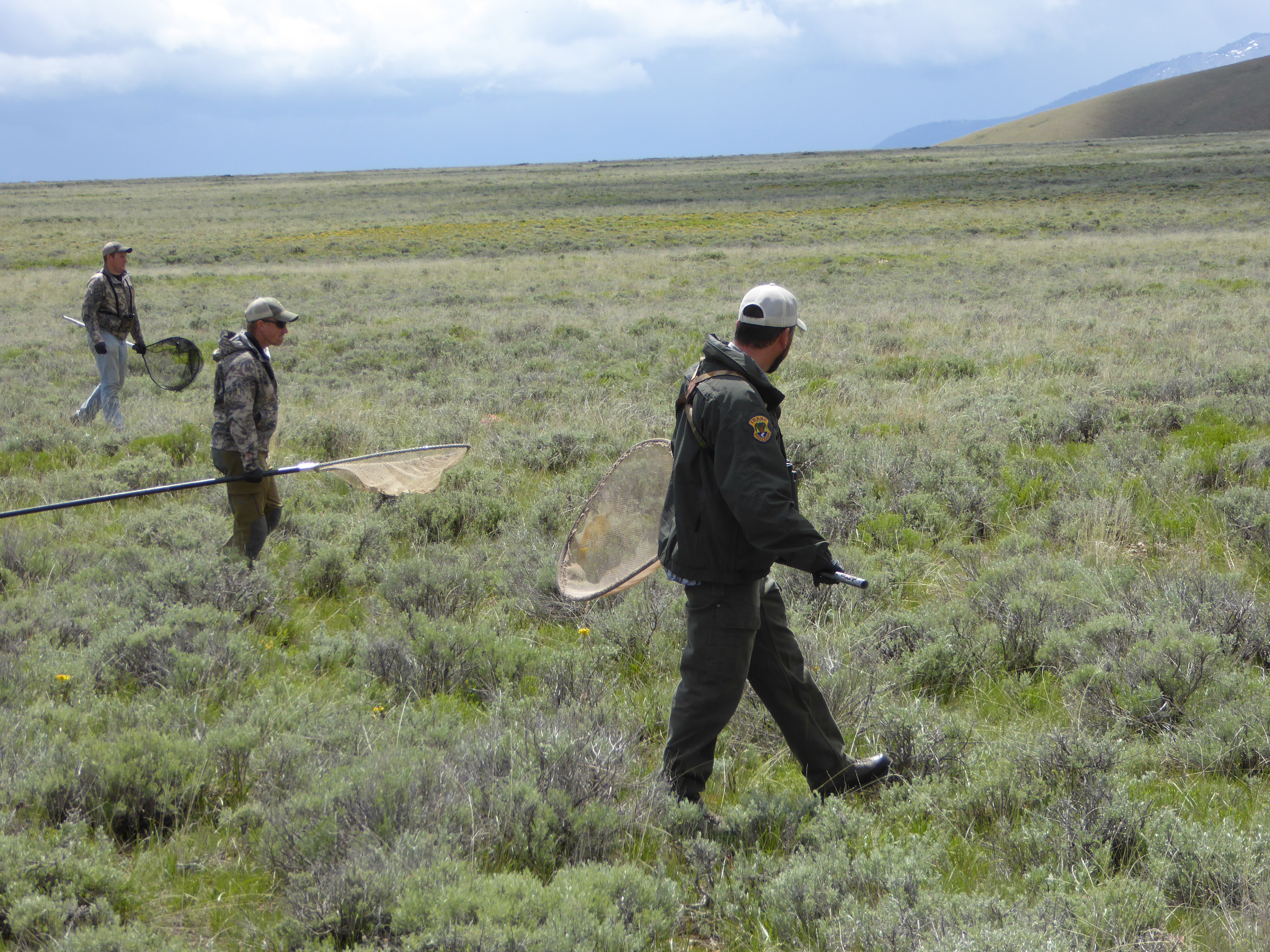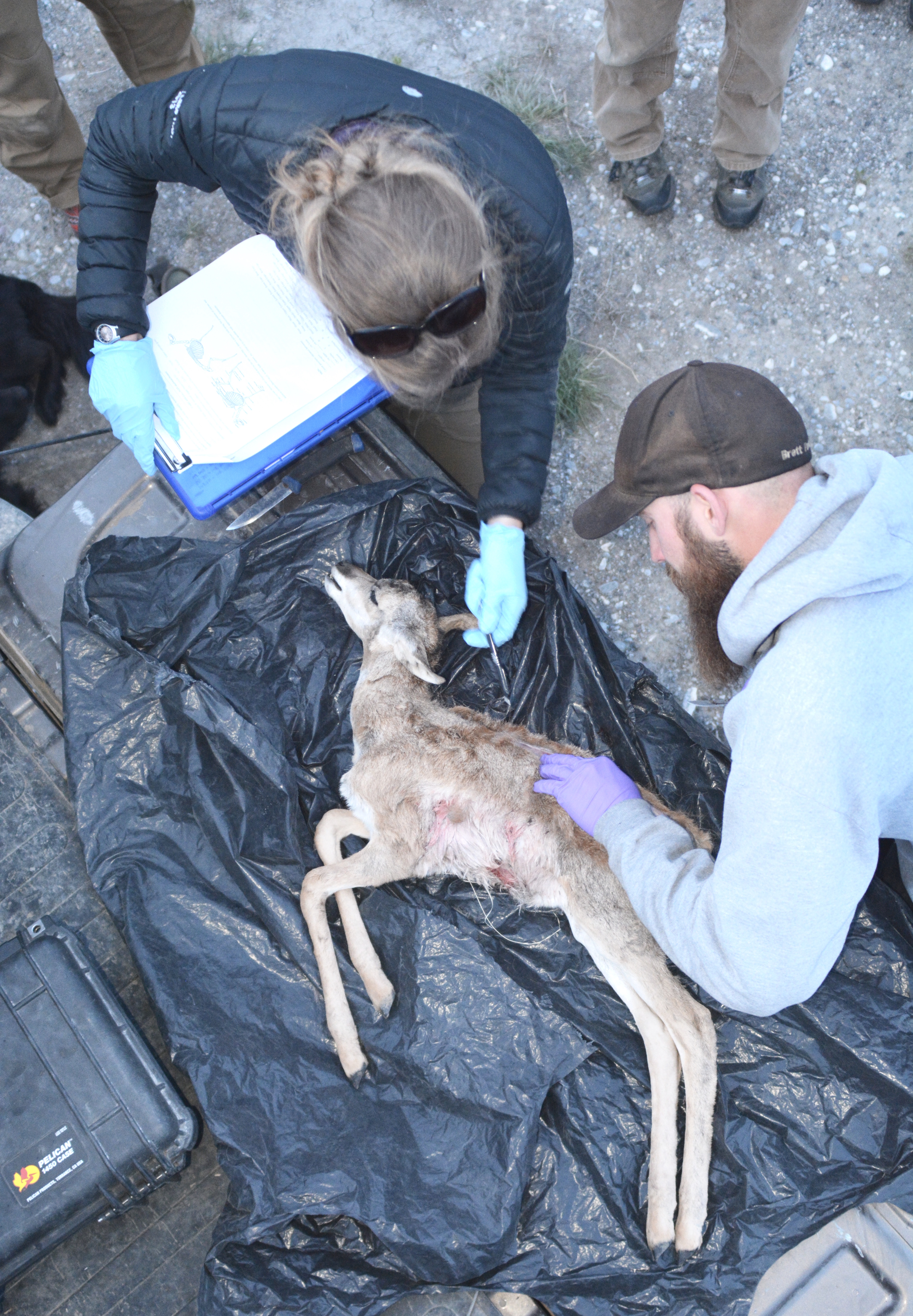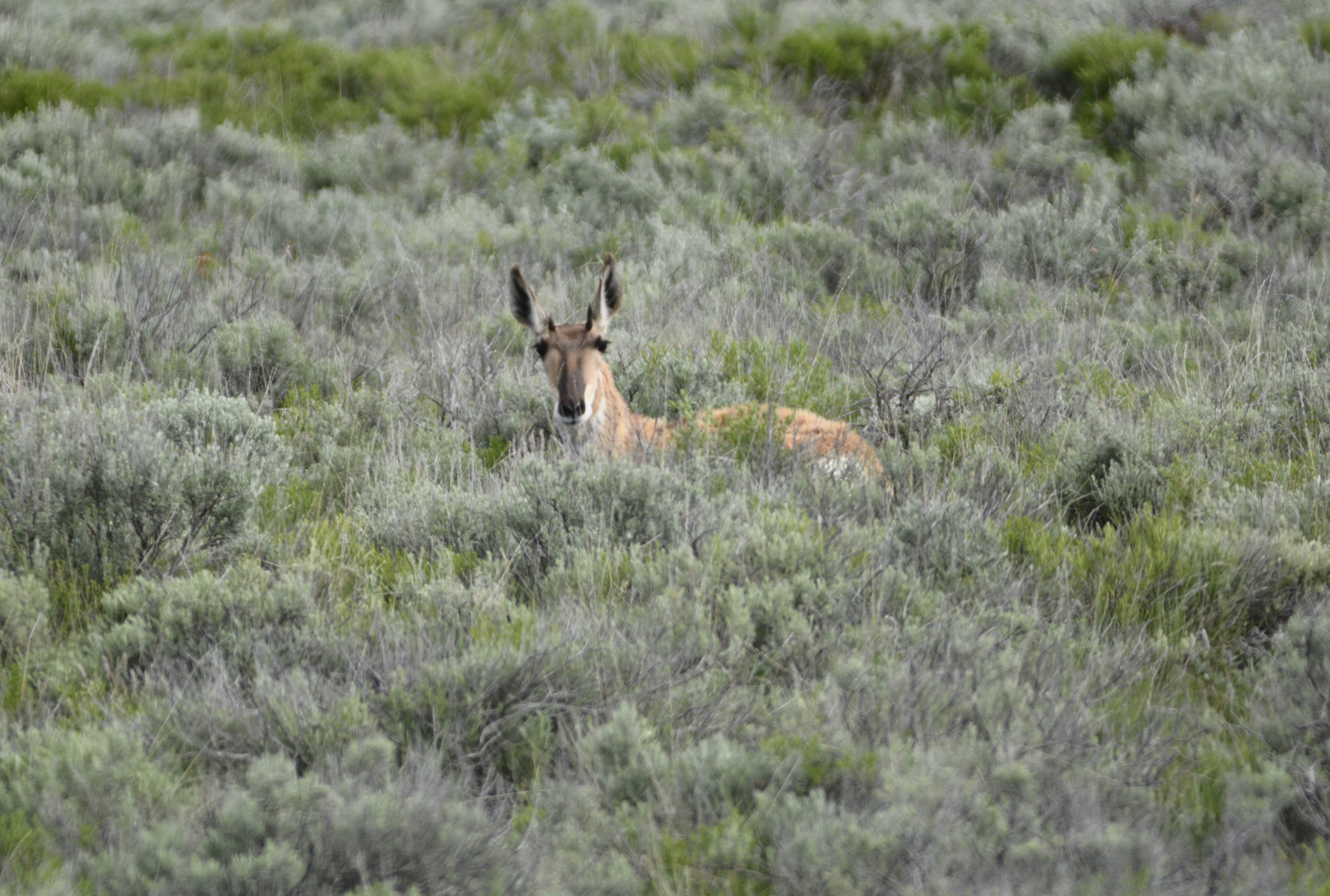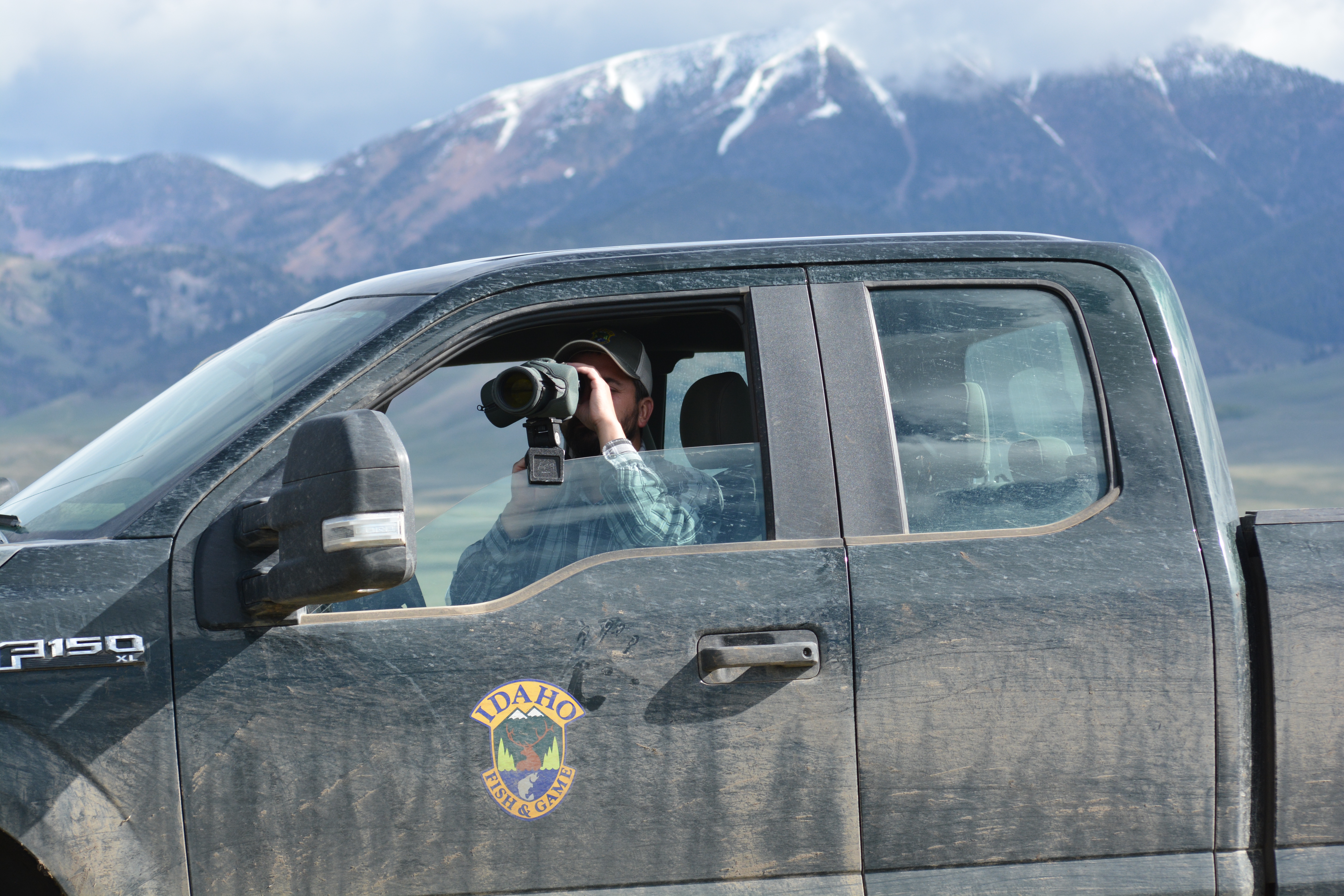By Roger Phillips, Idaho Fish and Game public information specialist
Catching North America’s fastest land animal with a salmon net may seem like a fool’s errand, but it’s possible with good timing and persistence.
The obvious question is “why would you want to do that?” The quick answer is to learn more about these fleet-footed animals that occupy large portions of Idaho, but in smaller numbers than they did decades ago.

Idaho Fish and Game crews have been capturing new-born pronghorn antelope fawns this spring and fitting them with radio collars. They want to know how many survive those critical first weeks, and also get a better understanding of pronghorns in general, including what might be done to boost their populations.
The project is led by Utah State University graduate student Brett Panting in cooperation with Idaho Fish and Game.
Panting describes pronghorns as the “forgotten child of the ungulates” because less is known about them than deer and elk.
He’s trying to change that. He’s midway through a two-year study that encompasses antelope doe survival, fawn survival, habitat conditions, predator populations, and even rabbit and ground squirrel populations. All those things will give biologists clues as to what’s driving, or limiting, pronghorns.
Research is taking place in three habitat types: predominately agriculture areas in the Camas Prairie area near Fairfield, high-mountain and native habitat in the Pahsimeroi River and Little Lost River drainages, and low-quality/fragmented habitat in the Big Desert area northeast of American Fall Reservoir.
Fleet-footed fawns
Paul Atwood, population biologists in the Upper Snake Region, watched for hours through a spotting scope to see if a doe would giveaway the location of her fawn. As soon a fawn is born, the clock is ticking for Fish and Game crews. Unlike deer and elk fawns that lie low for several weeks after being born, antelope fawns are up and traveling with their mothers within the first week, and typically within three days.  “After that, we’re not fast enough to catch them,” Atwood said.
“After that, we’re not fast enough to catch them,” Atwood said.
Atwood looked for subtle signs, such as udders on a doe, or a white patch on a fawn if he spots one. Fawns are typically earth brown when they’re born, then within a few days, they develop the prominent white patch on their midsection.
“That’s a pretty good indicator you’re not going to catch them,” he said.
When crews spot a new-born fawn, they carefully approach the area where it’s bedded, and try to pin down its exact position. Once located, they approach from behind and carefully net it.
The fawn is blindfolded, which calms it, and the crew quickly attaches a radio collar, weighs it, determines its gender, and releases it.
The mother usually watches from a distance, but sometimes, they will approach within 10 yards.
“They’re trying to intimidate us,” Atwood said.
Although fawns are vulnerable, their mothers aren’t passive, and “they will chase off a coyote,” he said.
A tough early life
Newborn pronghorn fawns are typically less than 10 pounds and born into a world of predators, with coyotes being most common, but bobcats and golden eagles also preying on them.

In 2015, 60 percent of all radio-collared fawns that died were taken by coyotes. While the biggest, single factor, coyotes aren’t the only ones. Bobcats and golden eagles also took fawns, and some died of other causes.
By early June, 44 out of the 116 newborn fawns collared in May had already died. While unfortunate, they still provide valuable information. For instance, Panting is seeing direct correlation between fawn weight and survival. A pound difference between newborns may not seem like much, but it factors into their odds of survival. It may also indicate light weight means poor body condition, or poor body condition of their mothers, which could mean habitat plays as big of a role as predation. That’s why research on nutrition and habitat are part of the study.
Adults matter, too
Wildlife managers are also looking at adult doe survival, and whether shifting hunting seasons may affect herds. Fish and Game is moving some of the hunting seasons out of the breeding season in some units, then switching them back and closing other units during the breeding season. The goal is to see if there’s a noticeable difference in breeding success that coincides with whether bucks are hunted during breeding season.

Understanding the inventory
Another part is simply learning how to monitor antelope populations. Fish and Game does not have an annual monitoring program like it has with deer and elk, and understanding what drives a population is challenging when you can’t consistently get an accurate population estimate and compare it with previous years.

But wildlife managers know pronghorns populations have declined since the late 1980s. The animals were abundant prior to then, but antelope often congregated in agriculture fields, and herds were thinned to reduce crop damage. The population trends have been fairly flat in recent years, including areas where pronghorns do not inhabit agriculture lands.
By looking at all the factors that could be affecting pronghorns, even whether rabbit and ground squirrel populations support a large coyote population that can restrict antelope production, Fish and Game hopes to better understand the animals and their environment so it can become better managers of one of Idaho’s most unique big-game species.

